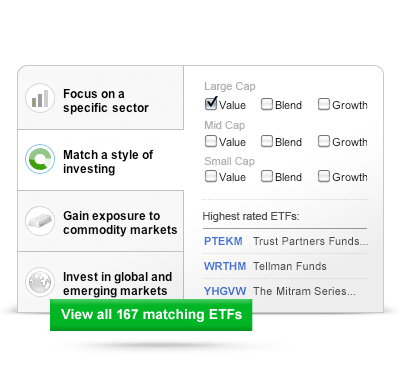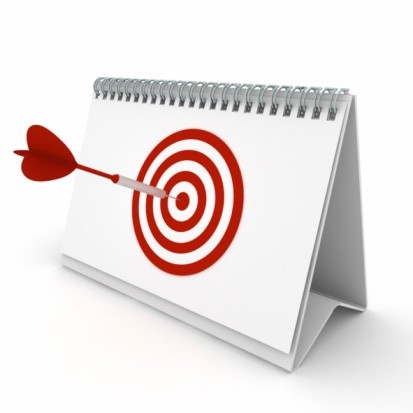Life Cycle ETFs
Post on: 16 Июль, 2015 No Comment

Life Cycle ETFs
If you’re new here, you may want to subscribe to my RSS feed. Thanks for visiting!
Today we will look at life cycle or target date funds.
In this post we will focus on exchange traded funds (ETFs). But be aware that there are also life cycle mutual funds.
Some technical differences between the two, but the fundamental principles are the same.
What is a Life Cycle ETF?
There are two keys to life cycle ETFs.
Retirement Date
The ETF is based on an expected retirement date for investors.
That “target date” is normally part of the fund’s name. Investors choose an ETF that corresponds to their specific retirement timeline. For example, you are 30 years of age in 2010 and intend to retire at age 65. So you would select an ETF with a target date of 2045.
While primarily used for retirement planning, they can also be used for other objectives with fixed future dates. Examples might be: weddings, home purchase, children’s college fund.
Asset Allocation
These funds use asset allocation techniques that shift over the life of the fund.
We will cover asset allocation later as it is crucial for investment success. Even more important than the actual investments that you select.
When one is young, there is a long time horizon until retirement. As such, young investors can tolerate greater volatility (i.e. risk) in their portfolios in the pursuit of higher returns.
As investors approach retirement, they want to lock in their portfolio gains. Further, they wish to reduce the uncertainty over the amount of capital they will have at retirement.
With life cycle ETFs, the fund invests in higher risk assets initially. As time to the target date decreases, the fund shifts its investments into less risky assets.
If you want to refresh yourself on this, please review my previous post on the Life Cycle View of Wealth Accumulation .
Why Use Life Cycle ETFs?
One Stop Investing
A major lure of life cycle ETFs is the ability to put your capital in one investment and (almost) forget about it until retirement.
You can set up automatic deductions from your chequing account and invest in this structure every month. The fund managers adjust the portfolio periodically to ensure that the time sensitive asset allocation targets are met.
Very simple for investors.
Cost Efficient
ETFs are generally less costly than comparable mutual funds. The same is the case here, subject to the usual caveats.
ETFs are also less expensive to own than paying a professional to pick individual equities, bonds, and other assets as part of one’s portfolio.
Cost Effective
It is highly questionable as to whether professional asset managers can actively outperform a passive investment strategy.
For most investors, I would recommend taking a passive approach. Therefore, utilizing ETFs and open-end index funds are the preferred course over paying a professional.
Life Cycle Approach Works
This is the way to successfully invest over the long run.
The use of asset allocation strategies based on one’s phase of the life cycle, that is. Not necessarily the use of life cycle funds.
Why Not Use Life Cycle ETFs?
Not Costless
I also believe that cost minimization is crucial to wealth accumulation.
While ETFs are generally less costly than mutual funds and active management, there are still annual fees and expenses charged for life cycle ETFs.
Previously, we looked at low-cost ETFs and open-end index funds covering the Standard & Poor’s (S&P) 500 index. We saw that the S&P’s Depositary Receipts (SPDR) S&P 500 ETF (SPY) and iShares S&P 500 Index ETF (IVV) both have annual total expense ratios (TER) of 0.09%. The Schwab S&P 500 Index (SWPPX) mutual fund has a TER of 0.13%.
While not a true apples to apples comparison, let’s look at a couple of available life cycle ETFs. All data is at December, 15, 2010.
The TDX Independence 2030 ETF (TDN) has a TER of 0.65%. The S&P Target Date 2030 Index Fund (TZL) has a TER of 0.30%.
You are paying for someone to purchase and adjust ETFs over time on your behalf. Something that you should be able to do for free.
Additionally, life cycle funds invest in other ETFs. These ETFs have costs of their own. So you run the risk of paying twice for operating costs.

Investors May Not Be Homogenous
Life cycle ETFs make assumptions about generic investors based on an expected retirement date.
But investors are individuals and not all cut from the same cloth.
Some investors may be more risk averse than others. Some investors may expect to live a long life after retirement and will want to continue seeking higher returns through riskier investments. Or perhaps other priorities children, health issues, career interruptions, home purchase, etc. come along that require individual investors to deviate from the life cycle planning of the generic investor.
Deviations in your personal life from that of the generic investor can complicate the simplicity of investing in only one product and forgetting about it until retirement.
Invest and Forget
Investment companies love this concept.
Some investors love this concept.
I would suggest smart investors be more cautious about invest and forget investments.
Regardless of the investment, you always need to monitor its performance. Not just in absolute terms, but against its peer group, designated benchmarks, and its risk-expected return profile.
While I do not expect investors to study charts and data daily, you should always review your holdings at least annually. Quarterly or semi-annually is even better. Should there be issues with certain investments, you will need to take action.
Buying and forgetting is not the answer to successful results.
So those are the pros and cons of life cycle ETFs and, to a similar extent, life cycle mutual funds.
Another relatively new investment concept, I have not seen long-term performance data. So I cannot comment on their net or relative results.
Given the investment strategy, you should invest for the long-term. Do not plan to be actively trading these funds.
Also, the investment strategies employed encompass a wide variety of asset classes and take a holistic approach with the investor. If you have other investments outside the life cycle fund, you need to monitor the fund to ensure that you do not over-invest in any one area. Otherwise the efficiency of your total investment portfolio may suffer.
I do like the simplicity of these investments. And for many people, the easier something is, the more likely they will partake.
However, I think that the average investor can easily create a well diversified portfolio of ETFs or index mutual fund encompassing all necessary asset classes. Then, through periodic monitoring and rebalancing to reflect your unique objectives and constraints, you can replicate what these life cycle funds achieve.
And without paying a management fee.
As to how one should set up an investment strategy, we will come to that in the new year.














